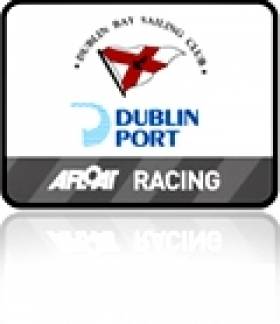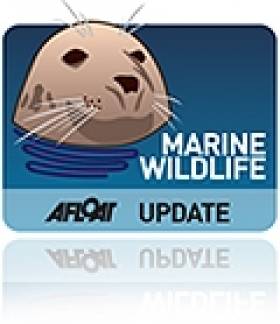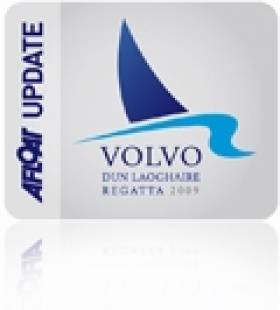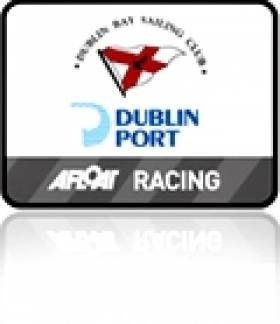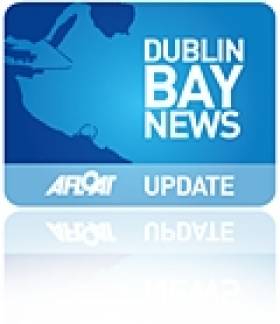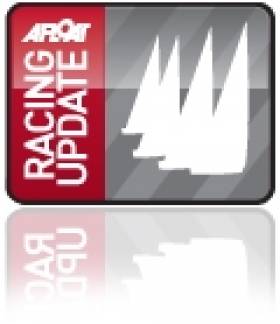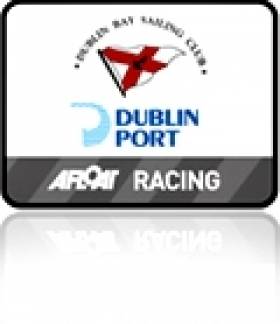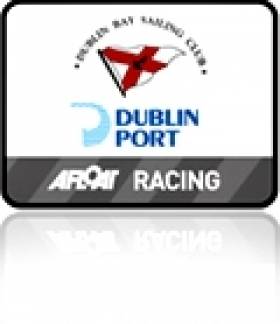Displaying items by tag: Dublin Bay Sailing Club
Supernova Does the Double on Dublin Bay
Ken Lawless's Supernova was a double winner in last night's Dublin Bay Sailing Club (DBSC) race, a result that sets up the Dubois Starflash design as a favourite in the biggest fleet of next week's Volvo Dun Laoghaire Regatta at the same venue. Our Dublin Bay Correspondent Reports.
On IRC handicap Huggy Bear (S.Doyle/G.Byrne) was second to Supernova and third was the Bolero 26, Two Step (Ross Doyle). On ECHO, Huggy Bear took second too but third went to the club's only Jezequel 116 design, Cri-Cri skippered by Paul Colton.
DBSC are celebrating the success of course changes introduced this year that have received widespread approval across the 17 fleets. The new courses are producing tight racing, a situation very much in evidence last night across the bay but particularly noticeable in the one design classes. Good turnouts from the Ruffian's, Fifteens and SB3s were treated to good courses and some of the closest racing of the season.
Royal St. George crews fared well with Derek Mitchell coming out on top in a 19-boat Ruffian fleet and Andrew Algeo at the helm of Flutter the SB3 winner. Tom Leonard's Mellifluence from the National Yacht Club was the winner of the 16-Flying fifteens. The full results are below:
BENETEAU 31.7 - 1. Bluefin Two (M & B Bryson), 2. Levana (Jean Mitton), 3. Prospect (Chris Johnston)
BENETEAU 31.7 Echo- 1. Extreme Reality (P.McSwiney/E.O'Rafferty), 2. Attitude (D.Owens/T.Milner), 3. Bluefin Two (M & B Bryson)
CRUISERS 1 Echo - 1. Adrenalin (Joe McDonald), 2. Xtravagance (Colin Byrne), 3. Axiom (M.O'Neill)
CRUISERS 1 - 1. Xtravagance (Colin Byrne), 2. Joker 11 (John Maybury), 3. Something Else (J.Hall et al)
CRUISERS 2 - 1. Jawesome 11 (V.Kennedy/M.Dyke), 2. Red Rhum (J Nicholson), 3. Bendemeer (Lindsay Casey Power)
CRUISERS 2 Echo - 1. Red Rhum (J Nicholson), 2. Jawesome 11 (V.Kennedy/M.Dyke), 3. Peridot (Jim McCann et al)
CRUISERS 3 Echo - 1. Supernova (K.Lawless et al), 2. Huggy Bear (S.Doyle/G.Byrne), 3. Cri-Cri (P Colton)
CRUISERS 3 - 1. Supernova (K.Lawless et al), 2. Huggy Bear (S.Doyle/G.Byrne), 3. Two Step (Ross Doyle)
DRAGON - 1. Susele (Michael Halpenny), 2. Diva (R.Johnson/R.Goodbody), 3. Phantom (D.Williams/P.Bowring)
FLYING FIFTEEN - 1. Mellifluence (Tom Leonard), 2. Snow White (Frank Burgess), 3. Fflogger (Alan Dooley)
GLEN - 1. Glenmarissa (F.Elmes/W.Higgins), 2. Pterodactyl (R & D McCaffrey), 3. Glenroan (Terence Moran)
RUFFIAN 23 - 1. Ruff Nuff (D & C Mitchell), 2. Diane ll (Bruce Carswell), 3. Ruff N Ready (Ann Kirwan et al)
SB3s - 1. Flutter (Andrew Algeo), 2. Defiant (R.Hudson/J.Hooper), 3. Alert Packaging (Justin Burke)
SHIPMAN - 1. Curraglas (John Masterson), 2. Therapi (Alan McCarthy et al), 3. Malindi (B.Smith/A.Gray)
SIGMA 33 - 1. White Mischief (Timothy Goodbody), 2. Gwili Two (D.Clarke/P.Maguire), 3. Pippa lV (G.Kinsman/K.Blake/M.O'Brien)
SQUIB - 1. Little Bird (N Barnwell), 2. Anemos (Pete & Ann Evans), 3. Chillax (Mary McLoughlin)
WHITE SAIL CRUISERS Echo - 1. Katie (Tom Dunne et al), 2. Nirvana (Bernard Neeson), 3. Edenpark (Liam Farmer)
WHITE SAIL CRUISERS - 1. Persistence (C. Broadhead et al), 2. Act Two (Michael O'Leary et al), 3. Calypso (Howard Knott)
Cheering Sailing Corinthians on Dublin Bay
Donal O'Sullivan of Dublin Bay Sailing Club writes on cheering the winner.
This is an old sailing custom whereby the winner is applauded by the loser - is not much practiced nowadays in Dublin Bay. The Dragons do it, or used to up to lately, and the Shipmans most certainly. The Wags, too, and no doubt the Glens
When boat were on adjoining moorings, cheering the winner was something people did automatically, almost perfunctorily. There was nothing unusual or self-conscious about it. Finished racing, you sailed up to the winner, gave him three hearty cheers and – be it noted - he was expected to reply in similar fashion. Dixon Kemp, the author of a well-regarded Victorian manual on sailing (Google it) says that the first boat then adds one more cheer – to sign off, so to speak – but I can't recall ever having noticed this latter part of the ritual being observed in these parts
Kemp (1839-1899) was one of those protean Victorian personalities, multi-gifted in all sorts of activities, who in its early days devised the format and the procedures for yacht racing that most of which we still observe to this day. He was an architect, newspaper editor, designer of yachts and steam vessels, author of a number of books on sailing, yachting editor of The Field, a founder member and first secretary of the YRA and also established Lloyd's Yacht Register.
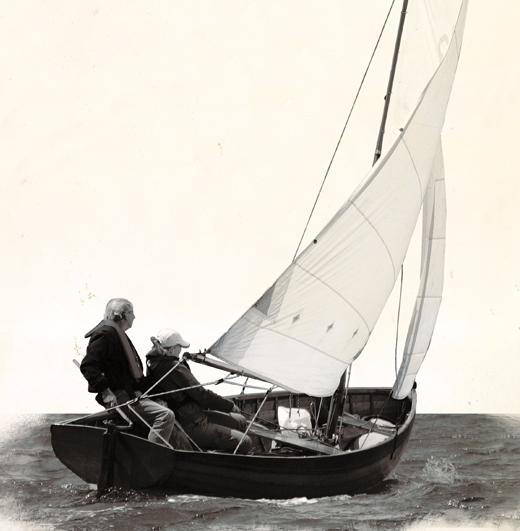
Keeping tradition alive, Waterwags sailing on Dublin Bay
His remarks on cheering read: The loud, deep and sonorous "hip, hip, hurrahs" which the crew of a vanquished yacht greet the victrix with. A custom much honoured. The crew of the vanquished yacht line the bulwarks and give three consecutive "hip, hip, hurrahs", the winning crew does the same; the vanquished then give a single "hip, hip, hurrah to "come up with" or
finish off.
He was interesting, too, on how the custom originated – the practice in the British navy of mustering the crew along the bulwarks to part company or meeting another ship.- derived, unlikely as it may seem, from the custom in "fighting days" of one war ship cheering another which was an enemy.
Corinthian Sailing
This was the theme of an interesting symposium of yachting historians organised in Dun Laoghaire last year by Hal Sisk. The term, simply defined, means sailing by amateurs. It was much in vogue in Victorian and Edwardian times and, unsurprisingly, in Dublin Bay, where amateur sailing was very much the thing..
The Royal Alfred, indeed, feeling the need to define exactly who was an amateur and who wasn't, in its 1895 constitution, described this individual as follows:
"A person shall not be considered an amateur who is, or has been employed for pay in any capacity on board a yacht or other vessel, commissioned officers of the Royal Navy, Royal Marines and Royal Naval Reserve excepted; also officers of the Mercantile Marine if they have never served for pay on board a yacht and are members of a recognised yacht club, but not anyone who is by trade or employment for wages a mechanic, artisan, labourer or servant".
Dixon Kemp points out that the term Corinthian "half a century ago was commonly applied to the aristocratic patrons of sports , some of which such as pugilism, are not now the fashion. The name was adopted in consequence of the similarity between the fashionable young men of Corinth who emulated the feats of athletes &c and their modern protypes".
The term, indeed, has always had a certain ring about it, a throwback, perhaps, to a code of honour or behaviour such as was presumed to exist in a bygone age between gentlemen of rank.
On a personal level I had direct experience of the force of tradition in this area some time ago during a protest hearing after a Dublin Bay race. As can sometimes happen, there was a flaw in the procedure, a fault seized upon with relish by the protestee. "Even if I were at fault, " he told us triumphantly "you can't do anything about it because this committee is illegally constituted". This was true enough because the race was a joint Alfred-DBSC affair and the committee, of course, should have made up of members of both clubs. Which is wasn't.
All we could do was grind our teeth in frustration until the senior member present solved the problem. "Mr So and So" he enquired, fixing the culprit with steely glance, " is this conduct proper to a member of a Corinthian yacht club? ". The effect was most gratifying. The offender sat up, reflected a bit - and thinking perhaps of all sorts of unpleasant letters directed to his club Commodore - conceded that perhaps he was in the wrong and in the circumstances thought it best to retire from the race.
Coming back to the historical Corinth, some years ago our late local parish priest, a very learned and by all accounts very saintly man, discussing St.Paul's Epistles to the Corinthians in one of his Sunday morning homilies, suggested that the word Corinthian has certain pejorative associations - that St. Paul, in his efforts to keep the inhabitants of that city on the steep and narrow, had, in effect, his job cut out for him.
Meeting him afterwards, I asked about this – in the sailing world, I told him that (stretching it a bit) a Corinthian was person of integrity and of the highest standards. The PP was unimpressed. In St. Paul's time, he averred, the Corinthians were no better than they ought to be. "Everyone knows that the Corinthians were a bad lot" seemed to be his view .
An interesting sidelight on what the PP might have had in mind - but perhaps was of too retiring a disposition to say so - appeared a while ago in a splendid volume, Some Talk of Alexander, by Frederic Raphael on myth and history in the ancient world. Raphael quotes a well-known Latin tag non cuivis homini contingit adire Corinthum, which, roughly translated, means "it's not everyone's luck to get to Corinth".
The city, it seems, was famous in antiquity for what Raphael delicately refers to as its erotic bazaar, an institution that had made Corinth into a world-class tourist attraction. And the luck in question referred to access to the delectable ladies who earned their living there.
Perhaps with this in mind it might be well if we were to use the word a bit sparingly?
Donal O'Sullivan
Watch Out for Dolphins in Dublin Bay!
Racers in Dalkey and Killiney Bay have been enjoying the sight of three bottlenose dolphins who have taken up residence in the area.
The trio has attracted much attention in recent weeks due to their playful antics, but the Dublin Bay Sailing Club reminds sightseeing boat owners to be careful not to crowd them.
For guidelines on the correct procedures when encountering dolphins see the relevant DTTAS Marine Notice HERE.
Post-DL Regatta Event for Ultimate Bragging Rights
Competitors in this year's Volvo Dun Laoghaire Regatta are set to race for the ultimate bragging rights in a new bonus event.
The Royal Irish Yacht Club is proposing the one-day event on Sunday 31 July modelled on the ISA All Ireland Sailing Championship, where up to 16 teams will compete in a winner-takes-all contest with the prize of a significant voucher to go against their annual Dublin Bay Sailing Club subscription.
The best helms from Cruisers 1, 2 and 3, White Sails, Sigmas, Dragons, 31.7s and SB3s will compete using the symmetrical kite J80s in a round-robin fleet racing format.
Each participating DBSC class will have one team, selected by being the highest ranked DBSC boat in the Dun Laoghaire Regatta. Each class can decide if the team is chosen on a design, IRC or ECHO basis.
More details will be available in due course from the RIYC website.
Commodore's Yacht Outfoxes Joker in Breezy Bay Race
Southerly winds gusting to 25–knots brought the DBSC Commodore's modified A35 yacht Gringo home for a fine win in Cruisers One IRC of Dublin Bay Sailing Club this afternoon writes our Dublin Bay Correspondent. Tony Fox's first win of the season however came only after a close race with John Maybury's top performing J109 Joker and Colin Byrne's X-34 Xtravagance.
Ken Lawless continues his success with another win in Cruisers III. Today, the Dubois Starfish design from the Royal Irish Yacht Club beat last Saturday's winner Gung Ho. Payptoo was third.
In a weekend scheduled for the second part of the Royal Alfred's Baily Bowl competition for Dragons, SB3s and Flying fifteens, DBSC has issued only Cruiser class, Ruffian, Shipman and Sigma results this evening.
Former Flying fifteen sailor David Meeke helmed his Ruffian 23 to a win over last Saturday's winner Diane II (Bruce Carswell) of the Royal St. George with former National Champion Derek Mitchell in Ruff Nuff third.
Tim Goodbody stayed top of the Sigma 33s with Ted McCourt's Popje second and Moonshine (R.Moloney/D.O'Flynn) third.
Full DUBLIN PORT Dublin Bay Sailing Club Results for 21 MAY 2011 below:
BENETEAU 31.7 Echo- 1. Attitude (D.Owens/T.Milner), 2. Legally Blonde (C.Drohan/P.Egan), 3. Violet Flame (B.Murphy/L.Osbourne)
BENETEAU 31.7 - 1. Prospect (Chris Johnston), 2. Legally Blonde (C.Drohan/P.Egan), 3. Magic (D.O'Sullivan/D.Espey)
CRUISERS 1 - 1. Gringo (Tony Fox), 2. Joker 11 (John Maybury), 3. Xtravagance (Colin Byrne)
CRUISERS 1 Echo - 1. Jump The Gun (M.Monaghan/J.Kelly), 2. Gringo (Tony Fox), 3. Axiom (M.O'Neill)
CRUISERS 2 - 1. Jawesome 11 (V.Kennedy/M.Dyke), 2. Jester (Declan Curtin), 3. Smile (O'Connell/Healy/O'Sullivan)
CRUISERS 2 Echo - 1. Jester (Declan Curtin), 2. Jawesome 11 (V.Kennedy/M.Dyke), 3. Smile (O'Connell/Healy/O'Sullivan)
CRUISERS 3 Echo - 1. Papytoo (M.Walsh/F.Guilfoyle), 2. Gung Ho (G & S O'Shea), 3. Pamafe (Michael Costello)
CRUISERS 3 - 1. Supernova (K.Lawless et al), 2. Gung Ho (G & S O'Shea), 3. Papytoo (M.Walsh/F.Guilfoyle)
RUFFIAN 23 - 1. Alias (D.Meeke/M.McCarthy), 2. Diane ll (Bruce Carswell), 3. Ruff Nuff (D & C Mitchell)
SHIPMAN - 1. Curraglas (John Masterson), 2. Whiterock (Henry Robinson), 3. Euphanzel lll (Louis McSherry et al)
SIGMA 33 - 1. White Mischief (Timothy Goodbody), 2. Popje (Ted McCourt), 3. Moonshine (R.Moloney/D.O'Flynn)
WHITE SAIL CRUISERS Echo - 1. The Great Escape (P & D Rigney), 2. Coumeenole (Bill Kavanagh), 3. Arwen (Philip O'Dwyer)
Dun Laoghaire Sailing Clubs Say Future is in Leisure
Dun Laoghaire's future lies in tourism and leisure, according to a submission on the new 'master plan' for the busy harbour.
The Irish Times reports that the town's top sailing and yacht clubs, who have come together under the banner of Dun Laoghaire Combined Clubs, are putting aside their individual interests "in favour of a larger and longer-term vision for the harbour".
The clubs' submission urges a rethink on public access to both the shore and water sides of the harbour. Inprovements in linking the town with the harbour area are already a goal of the master plan.
"Properly developed with a marine tourism and leisure focus [Dun Laoghaire] can generate new and sustainable sources of income." they said.
Dun Laoghaire Combined Clubs comprises the 'big four' waterfront clubs - the National, Royal Irish, Royal St George and Dun Laoghaire Motor Yacht Club - as well as the Dublin Bay Sailing Club and the Royal Alfred Yacht Club.
The Irish Times has more on the story HERE.
Grasshopper II Makes the Jump on Dublin Bay
The National Yacht Club Trapper 300, Grasshopper II, (Kevin and John Glynn) – one of two Trapper's racing on Dublin Bay this year – made light work of the scratch First 28 Chouskikou (R.Sheehan/R.Hickey) and the Sonata 28 Asterix (Counihan/Meredith/Bushell) to be first home tonight in Dublin Bay Sailing Club's (DBSC) Class Three Tuesday race. The breeze on Dublin Bay was 8-10 knots from the west and this – combined with an ebb tide – produced flat seas, a contrast to the comparatively big waves of the past two weeks.
On the dinghy course in Scotsman's bay Frank Miller's Fireball Blind Squirrel was first home from Marguerite O'Rourke's Samphire. Third was Neil Colin's Elevation, tonight's race being the first since the Leinster championships on Carlingford lough at the weekend. Full results for DUBLIN PORT Dublin Bay Sailing Club Results for 10 MAY 2011 below:
CRUISERS 2 - 1. Cor Baby (Keith Kiernan et al), 2. Free Spirit (John O'Reilly)
CRUISERS 3 - 1. Grasshopper 2 (K & J Glynn), 2. Chouskikou (R.Sheehan/R.Hickey), 3. Asterix (Counihan/Meredith/Bushell)
FIREBALL - 1. Blind Squirrel (Frank Miller), 2. Samphire (Marguerite O'Rourke), 3. Elevation (N.Colin/M.Casey)
GLEN - 1. Glenshane (P Hogan), 2. Glencorel (B.Waldock/K.Malcolm)
IDRA 14 FOOT - 1. Dunmoanin (Frank Hamilton), 2. Doody (J.Fitzgerald/J.Byrne), 3. Squalls (Stephen Harrison)
MERMAID - 1. Kim (D Cassidy), 2. Sallywake (Tony O'Rourke)
PY CLASS - 1. E Ryan (RS400), 2. F.Heath (Laser 1)
RUFFIAN 23 - 1. Alias (D.Meeke/M.McCarthy), 2. Diane ll (Bruce Carswell), 3. Different Drummer (Catherine Hallinan)
Click for the latest Dublin Bay Sailing Club news and results
Racing update: DBSC, ISORA, Royal St. George Knights, Olympic Keelboat Drama and Kinsale's Club House
Abroad, Keelboats are out of the Olympic Games (and kitesurfing is in!). Royal St. George Knights were quarter finalists at the British Team Racing Champs. There is video too with Irish commentator Jimmy Fitzpatrick.
Should Kinsale Yacht Club move or rebuild a crumbling premises?
Moderate easterly winds produced a great night's sailing on Dublin Bay tonight for the second Tuesday night race of the DBSC Summer season. In the Fireball dinghy class S. Oram's unnamed boat entry won again from Louis Smyth's 'Licence to Thrill'. Gary O'Hare lead the Laser fleet and picked up the Portsmouth Yardstick (PY) win from P. Keane. Third on PY was E. Ryan's RS400 dinghy.
DUBLIN PORT Dublin Bay Sailing Club Results for 3 MAY 2011
IDRA 14 FOOT - 1. Dunmoanin (Frank Hamilton)
MERMAID - 1. Jill (P.Smith/P.Mangan), 2. Lively Lady (G O'Neill & M Hanney)
PY CLASS - 1. Gary O'Hare (Laser), 2. P Keane (Laser 1), 3. E Ryan (RS400)
CRUISERS 2 - 1. Graduate (D O'Keeffe), 2. Cor Baby (Keith Kiernan et al)
CRUISERS 3 - 1. Papytoo (M.Walsh/F.Guilfoyle), 2. Chouskikou (R.Sheehan/R.Hickey), 3. Grasshopper 2 (K & J Glynn)
CRUISERS 4 - 1. Ghrazel (Charles Pearson), 2. Maranda (Myles Kelly)
FIREBALL - 1. nn (S Oram), 2. Licence to Thrill (Louis Smyth), 3. Elevation (N.Colin/M.Casey)
GLEN - 1. Glendun (B.Denham et al), 2. Glenshesk (L.Faulkner et al), 3. Glenshane (P Hogan)
RUFFIAN 23 - 1. Icicle (C & J Murray), 2. Diane ll (Bruce Carswell), 3. Alias (D.Meeke/M.McCarthy)
First Dublin Bay Sailing Club Race Abandoned Due to Lack of Wind
It would not have been a problem if the 80-metre Irish Lights Vessel Granuaile moored in Scotsman's Bay was the only obstacle for the Dublin Bay Sailing Club (DBSC) fleet to overcome tonight. It was obvious though – as soon as the first guns sounded – there were bigger issues for course setters as the evening's timid easterly breeze started to die.
As the flags drooped on DBSC's Spirit of the Irish committee boat shorter courses were set for the 17 classes – and 200 or more competing boats – but to no avail, the fickle light wind was not going to hold out.
As the Dragon and SB3 classes started their race it was apparent that even the fetch from the back of the East pier to East mark was going to be a big ask with such adverse tide.
After all but one of the white sail fleet failed to cross the start line the Race officer was forced to rule them out of time.
Even though it looked like there was breeze out beyond the Burford bank there was nothing in the inner bay area; crews sat to leeward, spinnakers collapsed and the first race of the 128th DBSC sailing season was abandoned.




























